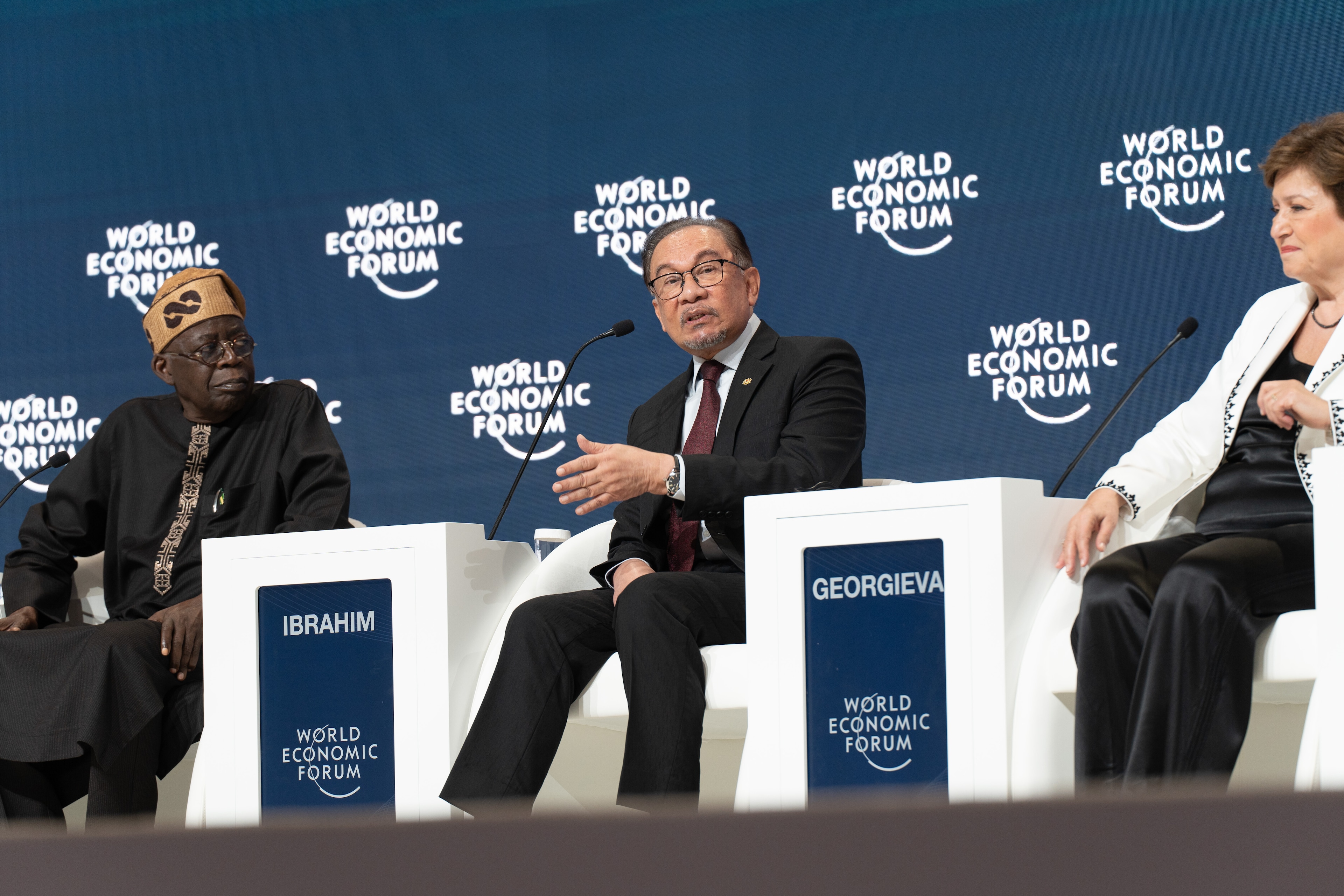Globally young people are investing more than ever, but do they have the best tools to do so?

Young people need educating on investing to make informed decisions. Image: Photo by Joshua Mayo on Unsplash

Get involved with our crowdsourced digital platform to deliver impact at scale
Stay up to date:
Financial and Monetary Systems
- Young people are actively investing in capital markets, with 70% of retail investors under the age of 45.
- Young people globally have financial literacy rates that hover below 50%, demonstrating the need to improve access to financial information and education.
- Financial literacy can help empower individuals to invest with higher returns, have lower levels of debt and overall better financial well-being.
The financial landscape is more complex than ever before. In the past forty years, individuals have increasingly felt compelled to financially prepare themselves for different life stages. Moving from pension systems to employer-backed retirement plans increases the burden on individuals in the US, for example, to understand and prepare for retirement. Alongside this, there has been a surge in new financial products available to everyday investors and, in many cases, a whole new set of financial decisions to make within one’s lifetime. In a world with growing inequality and a rising cost of living, individuals are now navigating a very complex financial landscape.
Young people are becoming more focused on growing their wealth
With many feeling that they face an uncertain financial future, individuals have become interested in investing. Innovations in technology, such as no-fee trading platforms and increased access to financial information via the internet, helped jump-start this trend. While involvement in securities trading (investing in stock, bonds, etc.) has historically in the US and Europe been used by wealthier individuals, markets are beginning to democratize. Many young people now see such investments as a trampoline to grow their wealth.
The World Economic Forum’s Global Retail Investor Survey found that 70% of retail investors are under the age of 45. In China, more than 90% of university-educated citizens from age 22 to 32 say that investing is a key part of their life plan and traditional methods of wealth accumulation, such as real estate ownership, are no longer the most relevant aspect of their financial plans. In India, between 2019 and 2023, over 120 million individuals have become retail investors, with the majority of these investors between the ages of 22 and 35. In Europe, where retail investment has been historically low, the European Commission has put together a plan to empower retail investment for enduring financial resilience.
Globally, young people are excited about retail investing as a way to grow their wealth now, as well as a way to prepare for their financial future.
Financial education and information can be difficult to access and engage with
Involvement in securities markets and other activities, such as retirement planning, budgeting, debt management, etc. hold significant opportunities for economic gain for individuals. But, paired with this excitement, comes the question, have financial institutions and policymakers empowered individuals with the best tools to engage in capital markets?
On the one hand, financial information is more available today than it ever has been before, but it can still be inaccessible and opaque to many individuals. Financial literacy programmes have historically been absent from many school curriculums making it difficult for individuals to build a strong foundation of financial knowledge.
Currently, only 33% of adults globally are financially literate, with financial literacy low in advanced economies with well-developed financial markets. In the United States, only 18.3% of those between the ages of 18 – 34 can correctly answer fundamental questions on financial knowledge. Globally, financial literacy levels, while varying by country, hover at around 35%. Financial information can be jargon-filled, with many individuals citing confusion and unfamiliarity with the stock market as a key reason for not investing.
Without a strong foundation in financial education, investing in the stock market, planning for retirement or managing debt can be difficult to navigate. In recent years there has been an effort to increase access to financial education, from policymakers and financial institutions; this push should continue.
What is the World Economic Forum doing to improve digital intelligence in children?
Financial literacy can empower individual financial well-being and help long-term wealth creation.

Financial literacy has been proven to affect savings, investment behaviour, debt management and borrowing practices. If we think about retail investors directly – it has also been found that financial literacy is associated with higher returns on investment and investment in more complex assets (such as stocks, bonds or other securities). For many young people planning their retirement – an understanding of components, such as compound interest, diversification of risk or exposure to products, like a high-yield savings account or an exchange-traded fund, can be very important. Knowledge of retirement planning can be crucial too. Many studies have found that financial education can empower the median worker to save over $1,000 per year in their retirement accounts.
Understanding the power of financial literacy begs the question – how can traditional financial institutions, policymakers and other players work together to enable financial education?
Firstly, besides the importance of financial literacy, it’s vital to acknowledge that financial education efforts are effective. Those who engaged in financial education modules or classes had significant changes in retirement planning behaviour and better-performing investment portfolios.
Employers, communities, policymakers and other players can work together to provide accessible and engaging financial education
Courses in financial education can happen anywhere: primary schools, higher education, workplaces and other places for community gathering. Studies have found that financial education modules, presentations and workshops are effective in all these settings. To highlight employers – offerings in financial education through online courses or in-person discussion can be instrumental. This way, valuable learning opportunities are readily available within daily routines, removing the need for individuals to seek out financial education elsewhere. Innovative startups have begun to work with employers on offerings such as these. On the same note – for young people specifically - financial education should start in schools. This can help start healthy financial habits early and encourage people to plan their first life milestones (first job, higher education, etc.) with financial knowledge.
With innovations in technology, financial education can be more affordable and accessible than ever before. Gamifying financial education, for example, can be engaging and create a less intimidating approach to a subject that can be filled with lingo. Paired with this – financial information aimed at young people is growing in popularity. It can be found across news outlets, podcasts, YouTube channels and other forms of media. It’s important to note that this information should be nonbiased and accurate, but the growth in interest and availability is the start of a path for accessible financial education.
Emerging and traditional financial institutions also have a great opportunity to embed financial education within the products they offer or separately have homes for financial knowledge within their digital assets, such as webpages or apps. A banking or stock brokerage application, for example, can contain a pop-up with unbiased financial education as a user moves through an app or a website. Given that many individuals already frequent these platforms, integrating contextual information or optional educational modules directly within these sites presents a convenient opportunity for financial education.
A multistakeholder group of the private sector, community organizations, policymakers and others can work together to empower individuals to have the best tools for long-term wealth creation and financial well-being.
As we witness the rise of young retail investors, it’s a critical time for the public and private sectors to think through the current plan for financial education and new methods to improve financial literacy. This financially complex world necessitates a strong foundation in financial knowledge. From schools to workplaces to community gatherings - financial education should be present. New ideas in technology create a ripe opportunity for providing engaging financial education at an accessible cost.
Financial institutions, policymakers and other players can help empower individuals to have the best tools and knowledge to start investing, plan retirement, budget, save and engage in capital markets.
Don't miss any update on this topic
Create a free account and access your personalized content collection with our latest publications and analyses.
License and Republishing
World Economic Forum articles may be republished in accordance with the Creative Commons Attribution-NonCommercial-NoDerivatives 4.0 International Public License, and in accordance with our Terms of Use.
The views expressed in this article are those of the author alone and not the World Economic Forum.
The Agenda Weekly
A weekly update of the most important issues driving the global agenda
You can unsubscribe at any time using the link in our emails. For more details, review our privacy policy.
More on Education and SkillsSee all
Ana Paula Assis
May 10, 2024
Andrea Willige
May 10, 2024
Phil Baty
May 8, 2024
Gayle Markovitz and Kate Whiting
May 2, 2024
Jean-Claude Brizard
May 1, 2024







